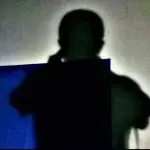I hesitated for a long time before deciding to watch Warfare, largely because last year’s Civil War convinced me that director Alex Garland truly believed that famous quote from French filmmaker François Truffaut: “There’s no such thing as an anti-war film.” To my mind, Civil War—with its self‑deconstructive determination and courage—boldly laid bare the fundamental meaninglessness of war, undercutting the supposed nobility of so‑called anti‑war films. Garland himself has pointed out the genre’s self‑contradictions: “You [can] end up with something that sort of name‑checks how bad war is, but it is really saying, ‘Oh my God, that looks cool.’” Given that, why would he re‑team with Ray Mendoza—the military advisor on Civil War—to make another war movie? But as I watched Warfare, my doubts melted away.
Adapted from Mendoza’s own experiences as a U.S. Navy SEAL in the Iraq War, Warfare recreated a single harrowing encounter he and his squad faced on November 19, 2006, just after the Battle of Ramadi. The screenplay played out in real time based on the squad members’ own testimonies. What emerged was an astonishingly authentic portrayal that forced me to confront the brutal reality of combat. At no point did the film look “cool”—instead, I felt trapped in that building with the commandos. Together with them, I panicked, experienced pain, and felt utterly disoriented.
This version of the Iraq War bore little resemblance to the news headlines of the actual conflict. Warfare omitted all the war’s landmark events— there are no depictions of the U.S.-led invasion, Saddam Hussein’s capture and execution, or America’s eventual withdrawal. Rather, it zeroed in on a single defeat—one suffered by the side that ultimately won.
Despite its title, Warfare contained few traditional battle scenes. For most of the film, members of the Alpha One squad were simply waiting, observing, and preparing to evacuate. If the first half’s waiting ratcheted up tension, the second half’s waiting magnified suffering: the anguished moans of wounded teammates mingled with distant gunfire as they desperately awaited rescue.
By sharing this drawn‑out waiting, the film compelled us to feel their fear and panic. Through jittery handheld close‑ups, I felt as though I, too, was in that dusty building, inhaling the stench of gunpowder and blood. When Alpha One finally escaped, local residents surveyed the aftermath and reassured one another, “They’re all gone. Don’t worry.” Meanwhile, Iraqis who had fought the Americans reconvened in the bombed‑out streets to inspect the corpse of a slain translator. As the frame froze on that scene, Warfare posed its deeper questions: after the Americans had departed and the Iraqis had reclaimed their ruined homeland, what did this war accomplish beyond pain, destruction, and death? Was it worth it?
Warfare lacked the grand set pieces of Saving Private Ryan and the lyrical symbolism of 1917, but it captured the psychological toll of combat with searing realism. The terror, helplessness, and confusion experienced by the combat soldiers intensified, while their operation’s strategic objectives blurred. Like Civil War, it acknowledged the powerlessness of humans and the futility of war. Crucially, Warfare’s message resonates even more today as global conflicts rage on. It questioned the role of cinema in a world where people are constantly fighting for their lives.
As I write this, Middle East tensions have flared again—Israel has struck Iran’s military sites, Iranian missiles have pierced Israeli defenses, and the U.S. has launched counter‑strikes. Then, within 24 hours of June 23, Iran retaliated by attacking a U.S. Air Force base in Qatar, triggering a fresh slew of missile exchanges that grounded flights and rattled global aviation. Under U.S. mediation, Iran and Israel agreed to a ceasefire—though both sides have violated it—revealing how brittle such truces can be.

Earlier, an open letter signed by 300 public figures urged U.K. Prime Minister Keir Starmer to end Britain’s “complicity” in Gaza’s humanitarian crisis and called for an immediate halt to arms exports, unfettered aid access, and active ceasefire brokering. Climate activist Greta Thunberg and Game of Thrones star Liam Cunningham boarded an aid ship to Gaza, only to be intercepted by Israeli forces. Their bravery was inspiring, but it also underscored how difficult effective action can be. This prompted a question: how can ordinary civilians like me actually contribute to world peace?
Warfare peeled away the righteous façade of war and exposed its chaos, pain, and futility. It reminded us that, even from afar, we are not insulated from others’ suffering—those distant explosions still echo across our shared world. In the face of ongoing global conflicts and Gaza’s humanitarian catastrophe, silence is complicity. To witness, to speak up, and to act—even in inconsequential ways—is how we defend our common humanity against war’s relentless machinery.
The discomfort and helplessness Warfare stirred in me mirrored the anguish of real‑world conflicts. It compelled me to speak up, however quietly. Action is within reach—speaking out, donating, joining rallies, signing petitions, or finding solidarity with others. Serious war films like Warfare matter not just for their depiction of brutality, but also for the unsettling questions they raise afterward. They force each of us to find our own starting point for action, even if that action is but a drop in the ocean.
Writing these words is my way of refusing to look away from the tragedies unfolding right before my eyes. Words won’t stop missiles, but as more refuse to turn away—choosing consciousness over numbness—the power of solidarity will eventually shine through.






















































View replies 0